Endovascular Procedures
Fenestrated Stent Graft Devices
Weill Cornell is one of only a few centers in the country with an Investigational Device Exemption to investigate the use of fenestrated stent graft devices designed specifically for the treatment of complex thoracoabdominal aortic aneurysms for patients deemed high risk for open surgery. The FDA-approved clinical trial is evaluating the endovascular thoracoabdominal aortic aneurysm repair using a standard-configuration stent graft with branches and fenestrations. The trial seeks to address the need for minimally invasive stent graft devices that can provide a safe and effective treatment for aneurysms located in the aorta in both the chest and abdomen. No stent graft treatment is currently commercially available for these patients. To date 85 patients have been treated with excellent outcomes. Results of the first 50 patients were published in the Annals of Surgery in October 2018.
Percutaneous Approaches for TAAA Repair
Endovascular surgeons at Weill Cornell were among the first to perform totally percutaneous thoracoabdominal aneurysm repair using axillary and femoral approaches. In 2018, they presented results of completely percutaneous endovascular thoracoabdominal repairs in 30 patients using this percutaneous axillary artery access method at the Eastern Vascular Society Annual Meeting. To date, some 60 patients have been treated using this method.
Benefit of Advanced Imaging Technologies
One significant risk in the endovascular repair of thoracoabdominal aneurysms is possibly interrupting blood flow to the spinal cord that can result in paraplegia. To avoid that risk, our vascular surgeons employ near infrared spectroscopy to monitor the collateral circulation to the spinal cord during the endovascular procedure. In addition, they use 3D image fusion technology for its potential to reduce IV contrast volume, radiation exposure, and procedure and fluoroscopy time.
Cerebral Protection in TEVAR
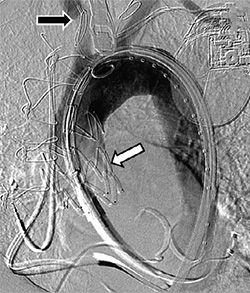
Fluoroscopic imaging of proximal (white arrow) aortic endograft following deployment with visible cerebral protection system (black arrow)
The NewYork-Presbyterian/Columbia University Aortic Center aggressively offers endovascular and minimally invasive therapy for a variety of aortic diseases utilizing cutting-edge technologies. Thoracic endovascular aortic repair (TEVAR) of the ascending aorta and aortic arch, which is currently reserved for patients unable to undergo surgical repair, is associated with increased risk of stroke. With promising data related to use of the Sentinel Cerebral Protection System in TAVR and TEVAR of the descending aorta, cardiothoracic and vascular surgeons with the Aortic Center presented the first published report of the cerebral protection device during TEVAR for an ascending aortic aneurysm in the September 29, 2018, issue of Seminars in Thoracic and Cardiovascular Surgery.
The 85-year-old female patient was referred for evaluation of a chronic ascending aortic aneurysm. Preoperative computed tomography angiography revealed an increasingly dilated ascending aorta. Given the patient’s age, prior cardiac surgical history, medical comorbidities, and elevated risk of perioperative stroke, the patient was offered endovascular repair with utilization of the cerebral protection. The cerebral protection system was removed without incident with no embolic debris noted within the system’s filters following retrieval. The patient was discharged the following day without any evidence of neurologic deficit.
In 2017, NewYork-Presbyterian had a 100% survival rate for elective endovascular procedures.
Endovascular Procedures
Volume
2013 - 2017
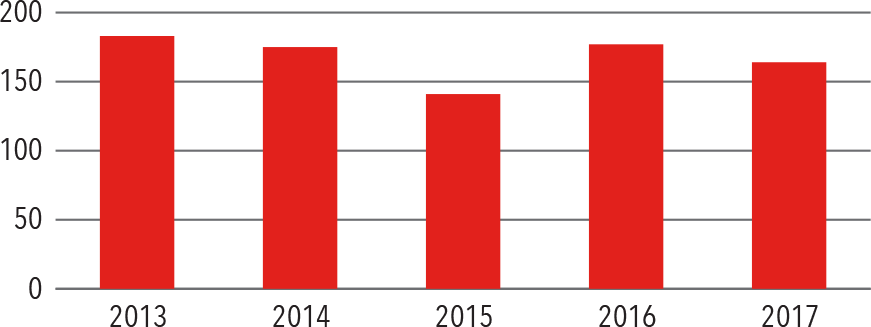
Source: NewYork-Presbyterian
Procedure Volume by Type
2017
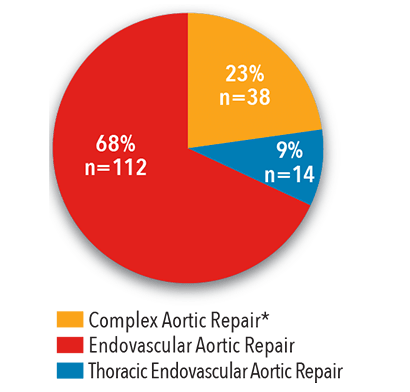
*Complex aortic repair: usage of fenestrated and branched stent grafts and thoracoabdominal repairs Source: NewYork-Presbyterian
Procedure by Location
2017
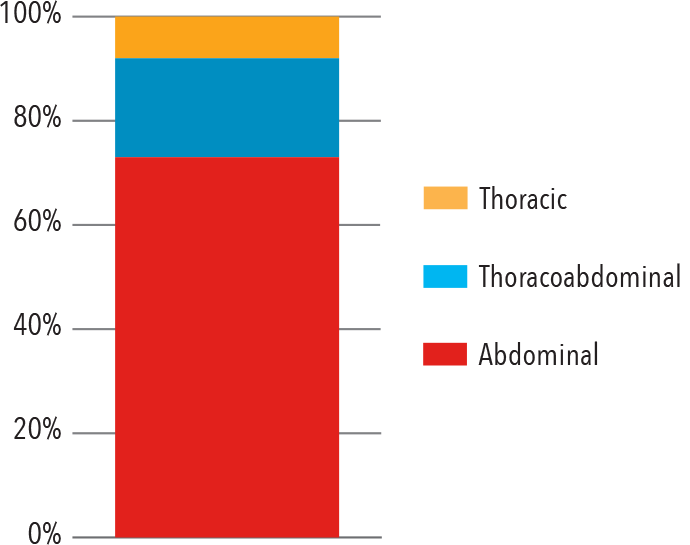
Source: NewYork-Presbyterian
Elective Endovascular Procedures
In-Hospital Complications
2017
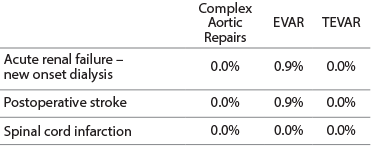
Source: Vizient Clinical Data Base/Resource Manager™ used by permission of Vizient. All rights reserved.
In-Hospital Mortality
2017
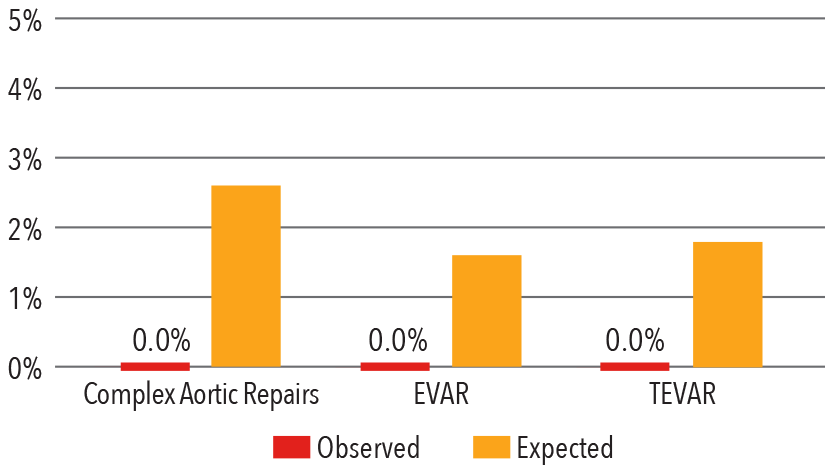
Source: Vizient Clinical Data Base/Resource Manager™ used by permission of Vizient. All rights reserved.
Endovascular Abdominal Aortic Repair (EVAR)
Complexity of the Abdominal Aortic Repair
2017
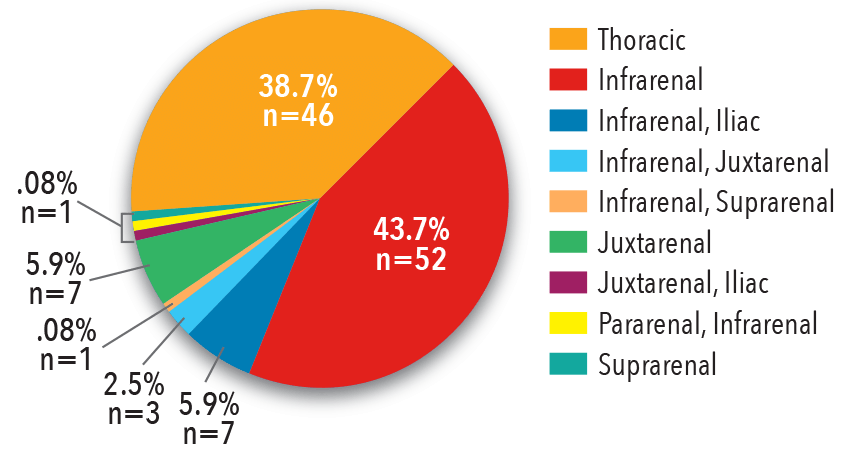
Source: NewYork-Presbyterian
In-Hospital Complications
2017
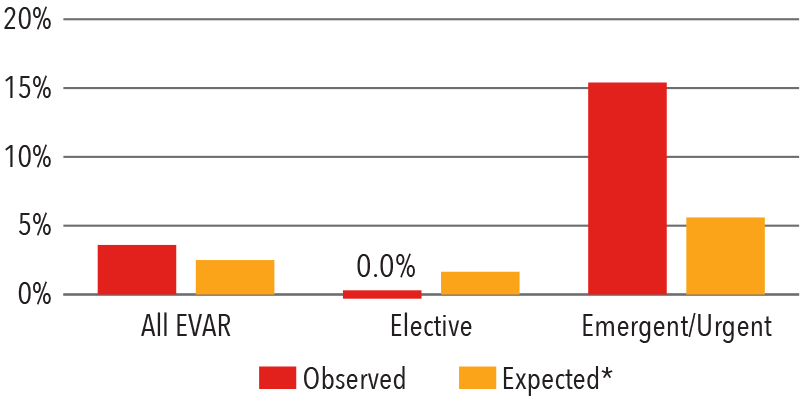
*Expected mortality was determined using Vizient risk-adjustment methodology. Source: Vizient Clinical Data Base/Resource Manager™ used by permission of Vizient. All rights reserved.
In-Hospital Mortality
2017
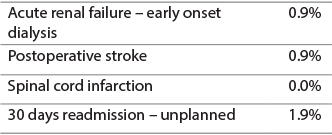
Source: NewYork-Presbyterian
Thoracic Endovascular Aortic Repair (TEVAR)
In-Hospital Complications
2017
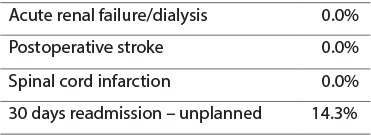
Source: NewYork-Presbyterian
In-Hospital Mortality
2017
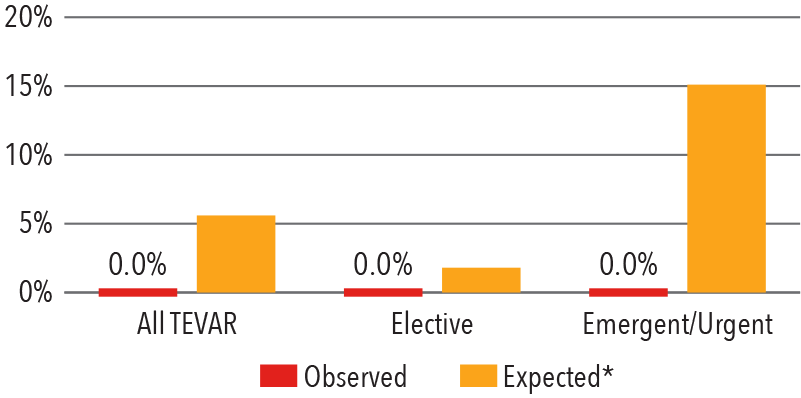
*Expected mortality was determined using Vizient risk-adjustment methodology. Source: Vizient Clinical Data Base/Resource Manager™ used by permission of Vizient. All rights reserved.



